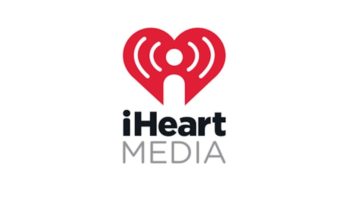Learning to love the Deathstar, part 2
Nov 1, 2000 12:00 PM, Skip Pizzi
Last month this column examined the coming of satellite radio and how it might affect the terrestrial radio environment. This time we’ll consider how terrestrial radio might benefit from the launch of S-DARS (Satellite Digital Audio Radio Service).
First, consider that S-DARS proponents have long claimed that satellite radio listening would not substantially reduce terrestrial radio listening because S-DARS’ primary audiences had already given up on local radio, and were largely cassette or CD users in the car. If this proves true, the ultimate result could actually be a net benefit to terrestrial radio. Because S-DARS receivers will also include AM and FM bands, if current non-listeners are brought back to the radio by S-DARS, they might occasionally tune over to the terrestrial bands as well. Thus S-DARS could actually increase local radio’s audiences – or at least wash out some of the loss of existing listeners with new ones.
How terrestrial can compete Last month we compared the cable TV transition to S-DARS, noting that most of the new cable TV channels did not duplicate the service of existing broadcast stations, choosing instead to focus on narrower pursuits (such as full-time movies, news, weather, sports, educational content, etc.) In sharp contrast, however, S-DARS services will generally compete head-to-head with local radio formats. Although this appears to make S-DARS a more direct threat to local radio, it’s a two-edged sword: if a terrestrial broadcaster produces a quality product in its format and satisfies its audience, it can keep listeners from turning to S-DARS, since they won’t find much programming that’s different there.
Then, assuming programming quality is roughly equivalent, the most obvious remaining differences between S-DARS and terrestrial radio will be the fewer (or no) commercials on S-DARS, and the localized content of terrestrial radio. Oh, and of course, the subscription fee for S-DARS. Terrestrial broadcasters should therefore maximize their local advantage wherever possible, and minimize their commercial loads whenever possible. A “listener education” campaign stressing the value of local and free radio service could also help.
Much has been made about S-DARS being a digital service, implying that its audio quality will be superior to terrestrial radio. In reality, a considerable amount of data compression will be used by S-DARS services, which may render them indistinguishable in audio quality from FM radio for most listeners.
Nevertheless, terrestrial broadcasters might consider some movement toward more voice-oriented programming on FM, such as all-news, news/talk and sports/talk.
Enhanced services Because S-DARS radios will necessarily be addressable (to enforce subscriptions), the service will have the ability to deliver private messages or other customized data. It is not yet clear whether this type of service will be offered or highly developed by S-DARS service providers, but if so, this is an area where terrestrial radio will have difficulty competing directly.
The closest terrestrial radio can offer is RBDS service. Car radios that include S-DARS might also feature RBDS (as do some of today’s high-end mobile receivers). By driving consumer demand for advanced receivers, S-DARS may provide the solution that RBDS has sought for so long in the US. Terrestrial broadcasters will then want to dust off their RBDS encoders and serve their audiences with localized data.
Finally, consider that the market is moving toward a “mobile media platform” that will bundle services that we think of today as separate: AM/FM radio (perhaps with RBDS and IBOC), cellular/PCS, GPS, S-DARS, CD/DVD, video games, mobile Internet browsers, etc. Just as today the AM/FM/cassette is considered a standard, singular device in the car, the mobile multimedia platform of tomorrow will likely be thought of as a monolithic system, with various tiers of quality and features. Terrestrial broadcasters should mine their important lode in this environment, tailoring programming and data offerings to cater to such a well-connected listener. This implies a smart wireless web presence and plenty of cross-promotion and partnerships with the other service and product providers for this integrated marketplace.
There is clearly life after S-DARS for the creative broadcaster. It won’t be business as usual, but in some ways it could be even better than today.












